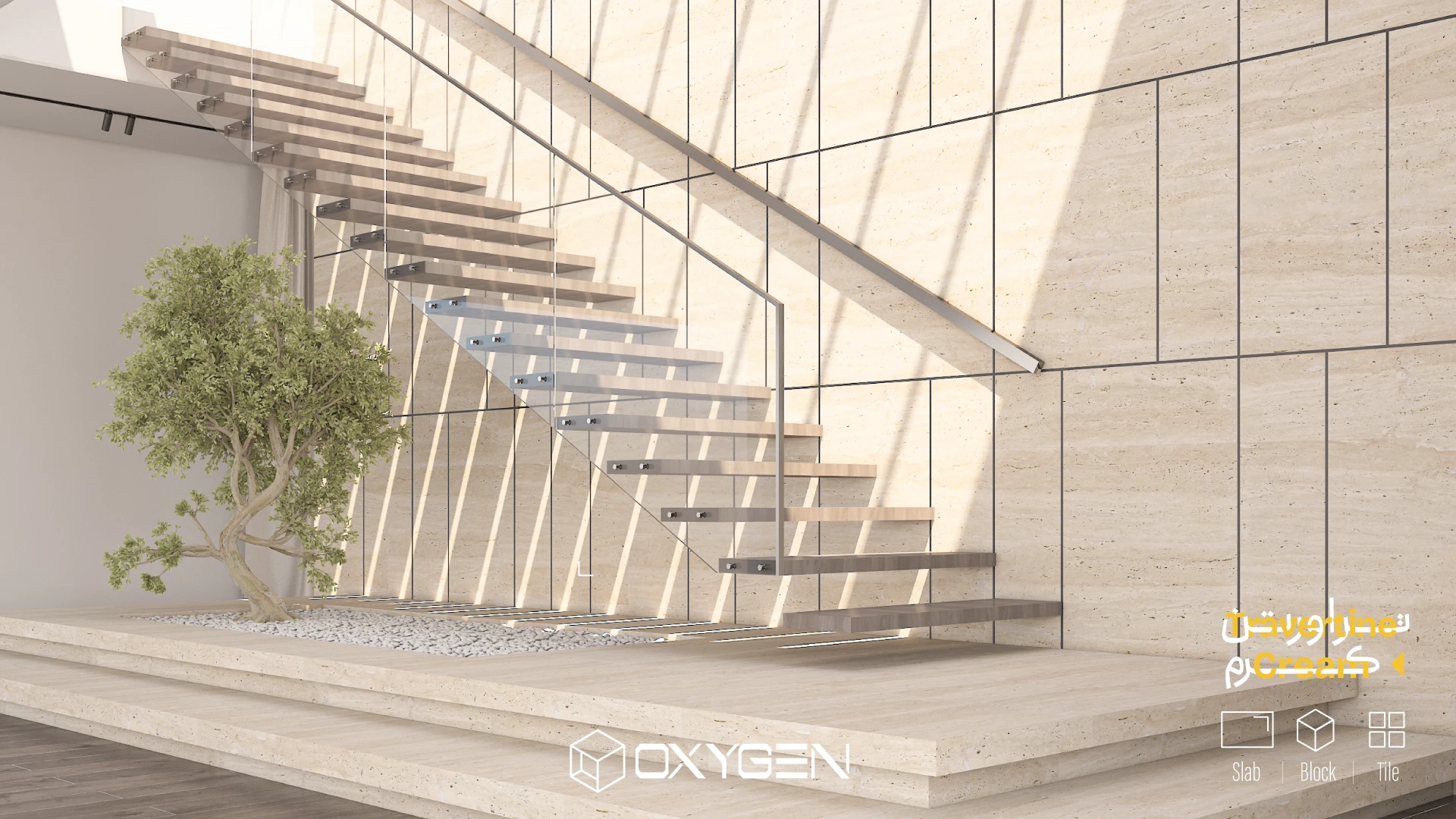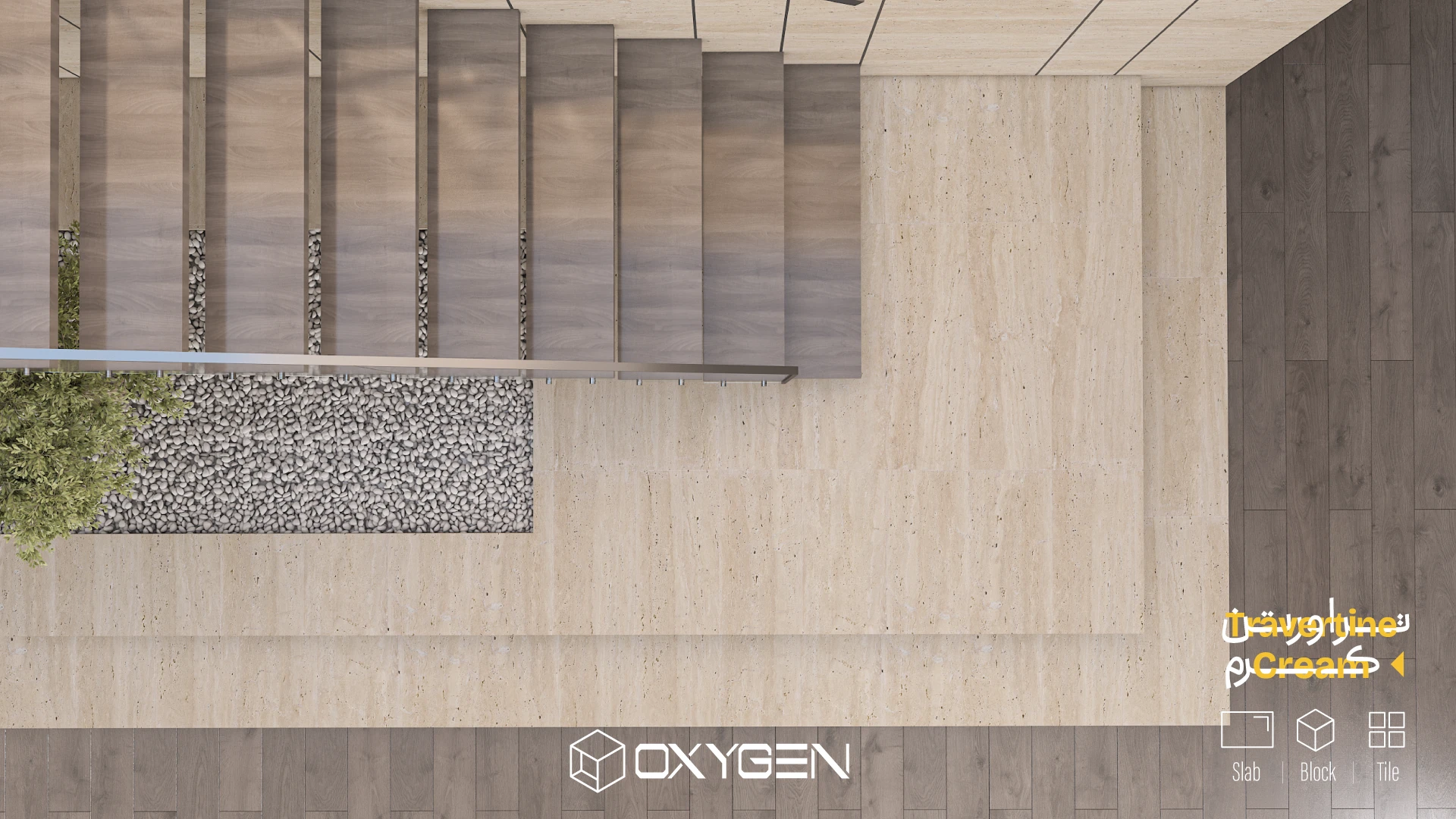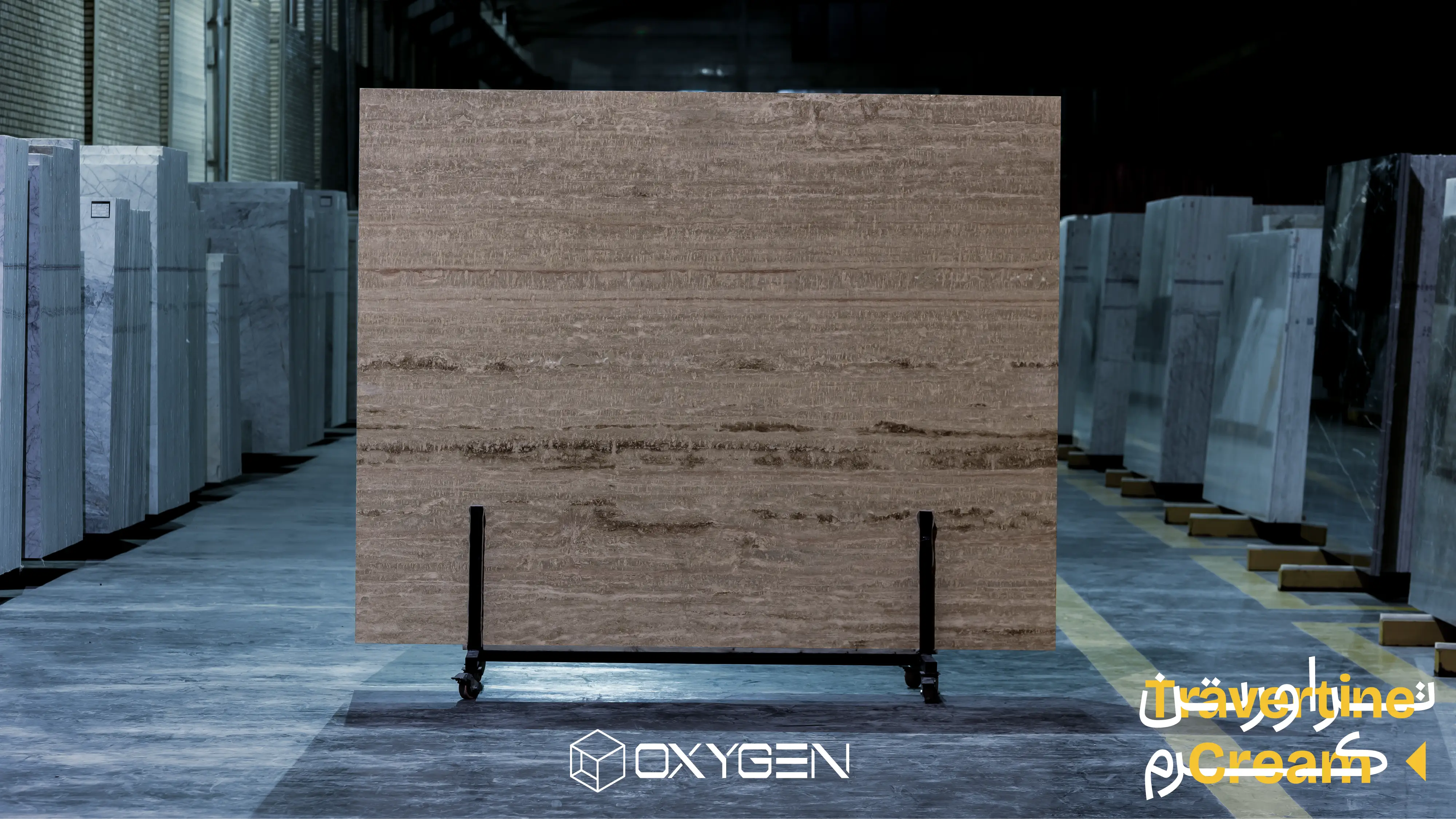
What is Travertine Stone?
What is Travertine Stone? Travertine stone, due to its unique beauty and variety of colors, is considered one of the most popular stones in the decorative stone market. In this article, we will examine the features, applications, advantages, and disadvantages of travertine stone, as well as introduce the best travertine stones in Iran, including the beautiful and popular Abarkuh travertine from Oxygen Stone Makers Company.
What is Travertine Stone?
Travertine stone, classified as a sedimentary rock, is a type of porous limestone formed from the deposition and accumulation of sediments from hot springs. Travertine has a porous texture and a variety of colors and banding patterns, with its color diversity resulting from differences in the compositions present during sedimentation, which manifest as various streaks. The fewer soluble elements in the water from these sources, the lighter the color of the stone will be.
Characteristics of Travertine Stone
The most important feature that distinguishes travertine stone from other building stones is its appearance, such as its porosity and layered, wavy structure. Due to the presence of pores and tiny holes in travertine, cement adheres well to it and penetrates the stone. This stone is available in two types: wavy and non-wavy, with the non-wavy type being of higher quality compared to the wavy one. The non-wavy stone has a smooth and uniform surface, providing a very beautiful appearance to buildings. Additionally, it has a high level of brightness, which enhances the visual appeal of the structure.
Cream-colored travertine from Abarkuh, Yazd, is very durable and does not get damaged upon impact. It is worth mentioning that this product shows high resistance to heat and does not crumble. Furthermore, it is filled with high-quality processed materials, which means it does not get damaged during cutting and can be shaped in various forms. In general, most travertine stones have low abrasion resistance and relatively good compressive strength, and the conditions for working in saturated environments and at heights are favorable due to the high strength and porosity of travertine stone.

What are the applications of travertine stone?
In Iran, travertine stones, especially the export-quality travertine from Abarkuh, are primarily used for the exterior facade of buildings, as well as for Roman and classical styles. Additionally, travertine is noted as one of the most suitable stones for flooring, being used in areas such as lobbies and even courtyards. Another application of travertine, particularly the light cream travertine from Abarkuh, is its use in the creation of sculptures, stone objects, and decorative items due to its malleability. Constructing staircases is also another application of Abarkuh travertine, which is feasible because of the stone's high polishability.
Unpolished cream travertine from Abarkuh is an appropriate choice for use in bathrooms and pool floors. This stone can also be utilized on kitchen walls. Its fire resistance makes it suitable for building fire pits as well. The use of this stone in fireplaces, house entrances, and hallway floors is also common.

Advantages and Disadvantages of Travertine Stone
Advantages:
- Diverse Color Range: Travertine is among the stones that have a very wide variety of colors, making this one of its most important advantages.
- Processing Capability in Various Forms: Travertine is one of those building stones that can be processed in different forms such as veined and non-veined, matte, glossy, or hammered.
- Thermal and Acoustic Insulation: One of the most significant advantages of travertine stone, due to the presence of holes caused by trapped gases, is its resistance to heat and sound transfer.
- Lightweight: Compared to many stones available in the market, travertine has a lower weight, which helps reduce the overall weight of the building.
- Easy Cutting: Travertine is one of the stones that can be easily cut, making this one of its most important advantages compared to other building stones.
- High Polishability: Another advantage of travertine is its high shapeability and polishability, which is considered one of its key benefits.
- Affordable Price: The reasonable price of travertine is another advantage and has a significant impact on its high sales in the market.
- Color Stability and Beauty: The high resistance of this stone to sunlight and the presence of a UV protective layer on its outer surface are among the main reasons it is considered a best-seller.
- Easy Installation and High Adhesion: Another notable advantage of travertine stones is their easy installation and the high adhesion property of the mortar to them. This property arises from the numerous holes in the stone and plays a significant role in the popularity of travertine.
Disadvantages:
- Low Compressive and Abrasion Resistance: Travertine naturally has low compressive strength, which means it may crack or break under heavy impact or pressure.
- High Water Absorption (if resin and other coatings are not used): Another disadvantage of travertine is its relatively high water absorption. However, this issue can be resolved with resin. With the introduction of resin to the market and its common use for processing and polishing, the amount of water absorbed in newly produced stones has decreased, and they also get dirty less quickly.
- Sensitivity to Acids: Travertine is naturally sensitive to acids and chemicals, and contact with strong acids like sulfuric acid may cause corrosion and staining.
What is the difference between travertine and Marmarite (marble)?
In terms of formation, Marmarite (marble) stones are carbonate rocks that acquire a distinct crystalline texture due to crystallization caused by heat and metamorphic pressure, essentially consisting of separate or combined minerals of calcite and dolomite. On the other hand, travertine is a type of porous limestone formed from the sedimentation and deposition of hot spring deposits.
Marmarites (Marbles) have lower porosity, which results in lower water and moisture absorption; therefore, compared to travertines, they are heavier, more resistant, and have very good polishability. Conversely, travertines have high porosity, high adhesion, and lower weight.
Travertine mines in Iran
In our country, Iran, there are over a hundred travertine stone mines, each with its own characteristics, prices, colors, and nature. Some of the most important and well-known travertine stones in the Iranian building stone market include Abbas Abad travertine, Haji Abad travertine, Darreh Bokhari travertine, red Azar Shahr travertine, Silver Kashan travertine, and Abarkuh travertine.
which mine has the best travertine?
Abarkuh travertine is a type of cream travertine from the Abarkuh region of Yazd, characterized by a cream and beige background with brown, white, and pink streaks visible on its surface. The Abarkuh travertine mine is located in the cold region of Abarkuh in Yazd province on the Maryam Abad road. Abarkuh travertine is extracted and processed from several quarries that have uniform physical characteristics.

Conclusion
In this article, we became familiar with the features and applications of travertine stone and its differences from marmarite (marble). Due to its beauty and physical and chemical properties, travertine is a popular choice among contractors and designers for construction and decoration in building and civil engineering projects. Abarkuh travertine, with its cream background and beautiful streaks of brown, white, and pink, stands out remarkably. Esteemed buyers of travertine stone can purchase high-quality travertine at reasonable prices from reputable and direct sources, such as Oxygen Stone Company.


